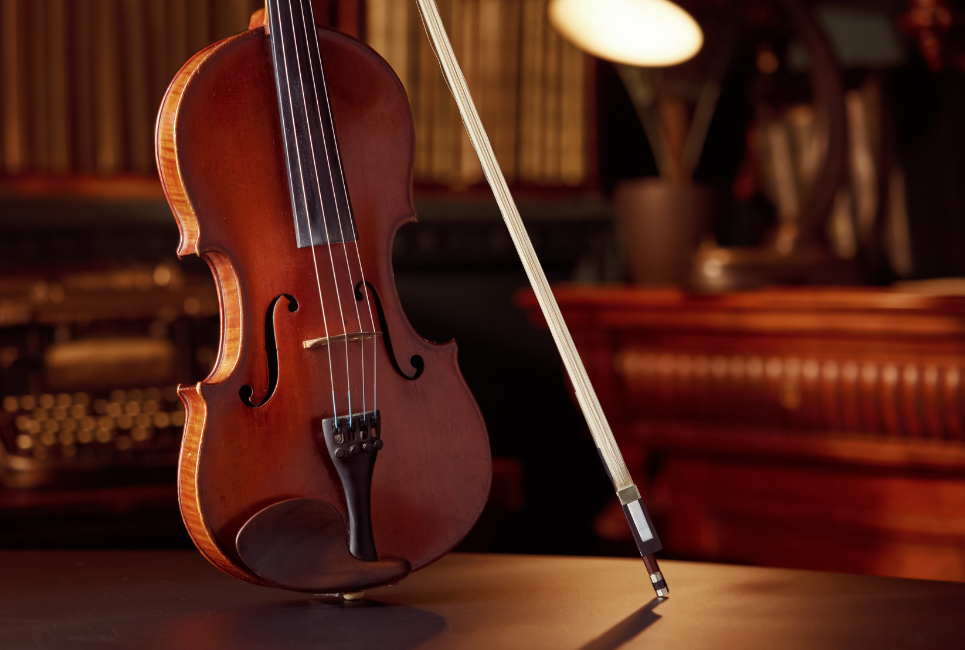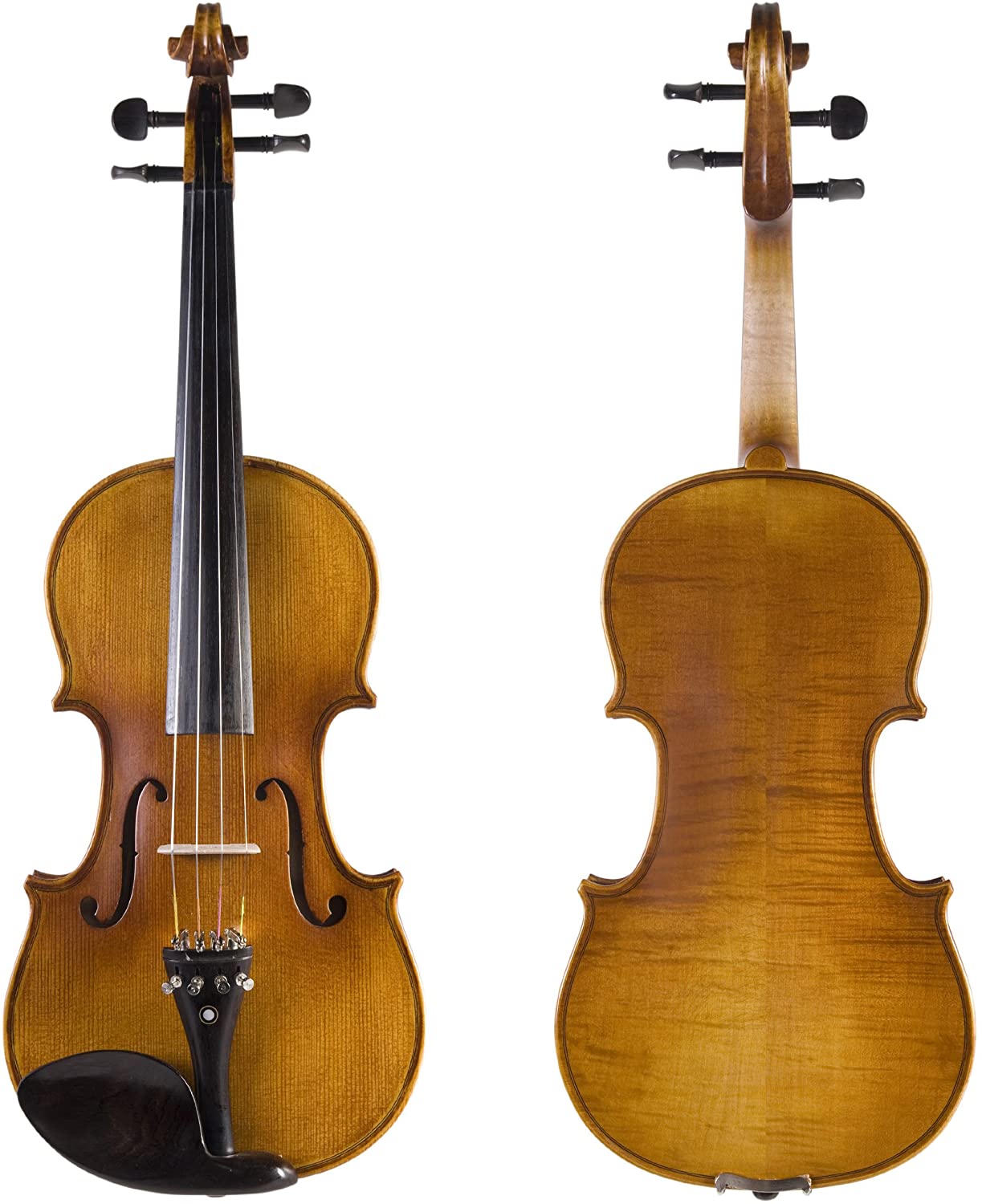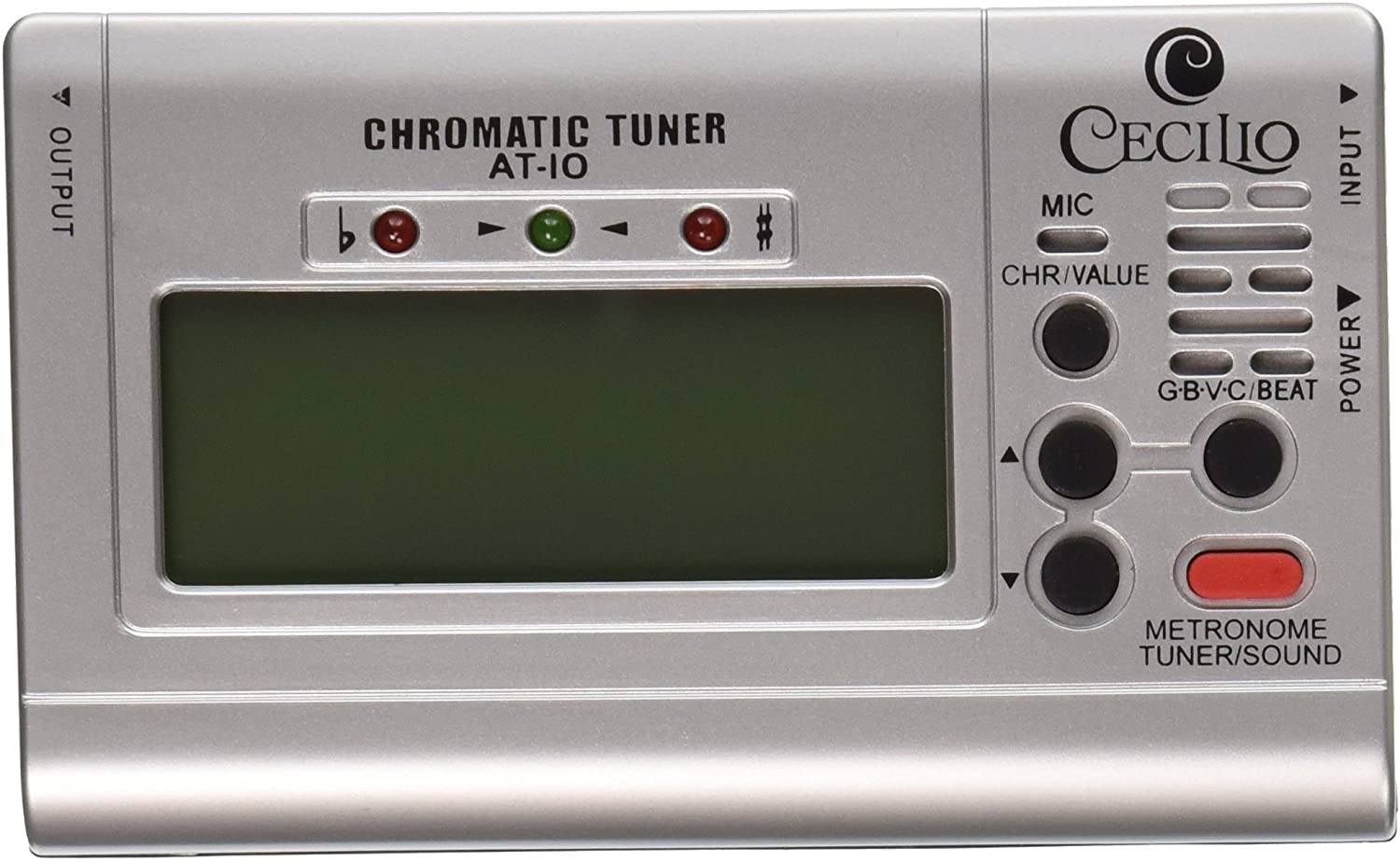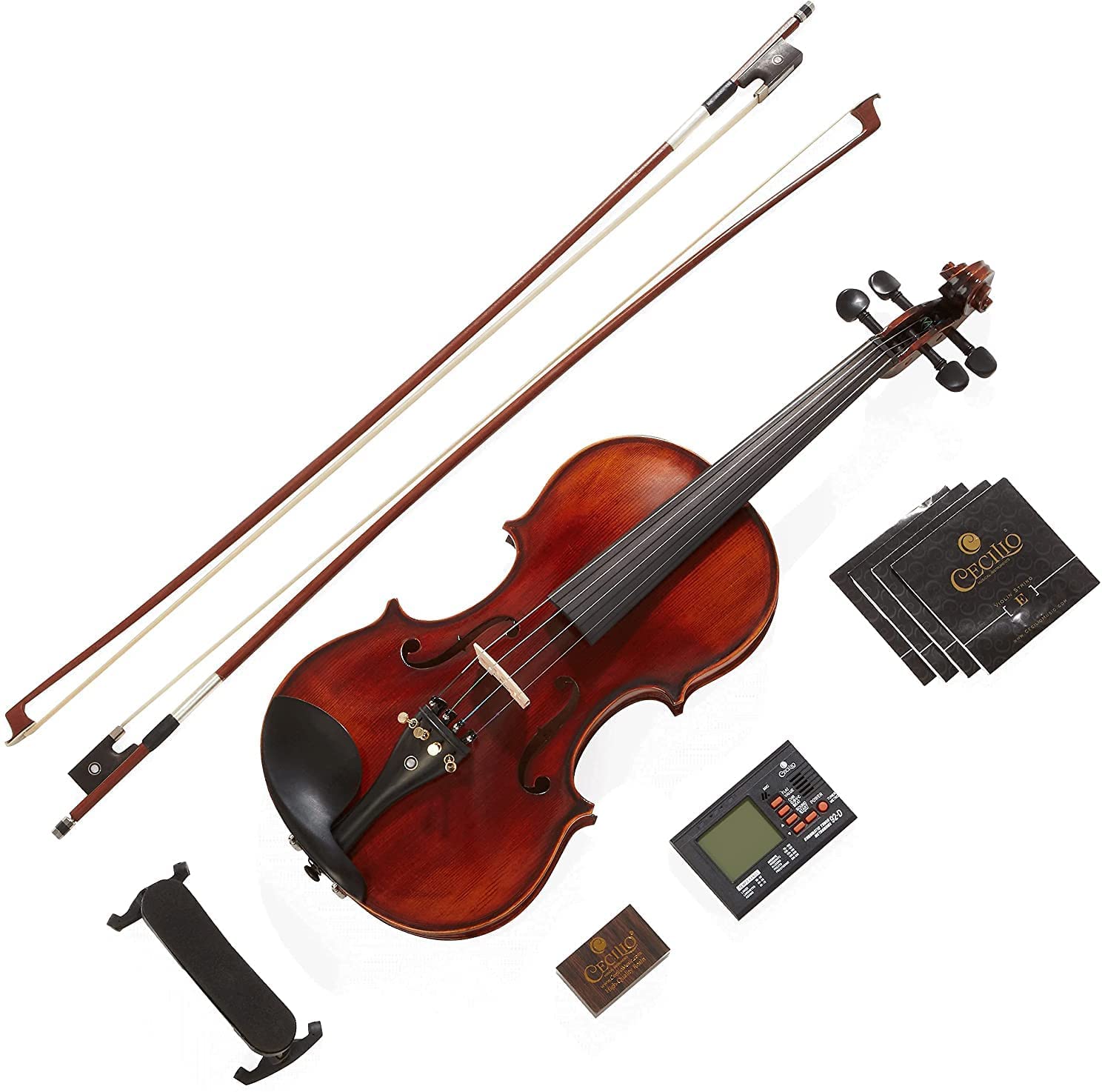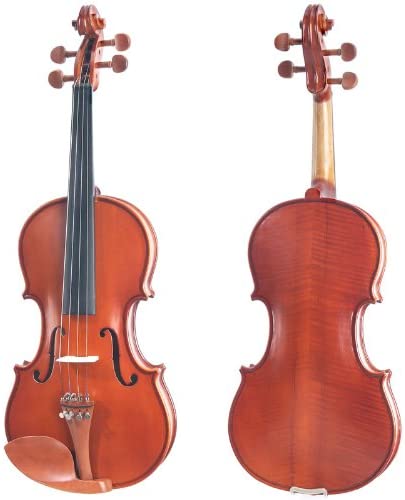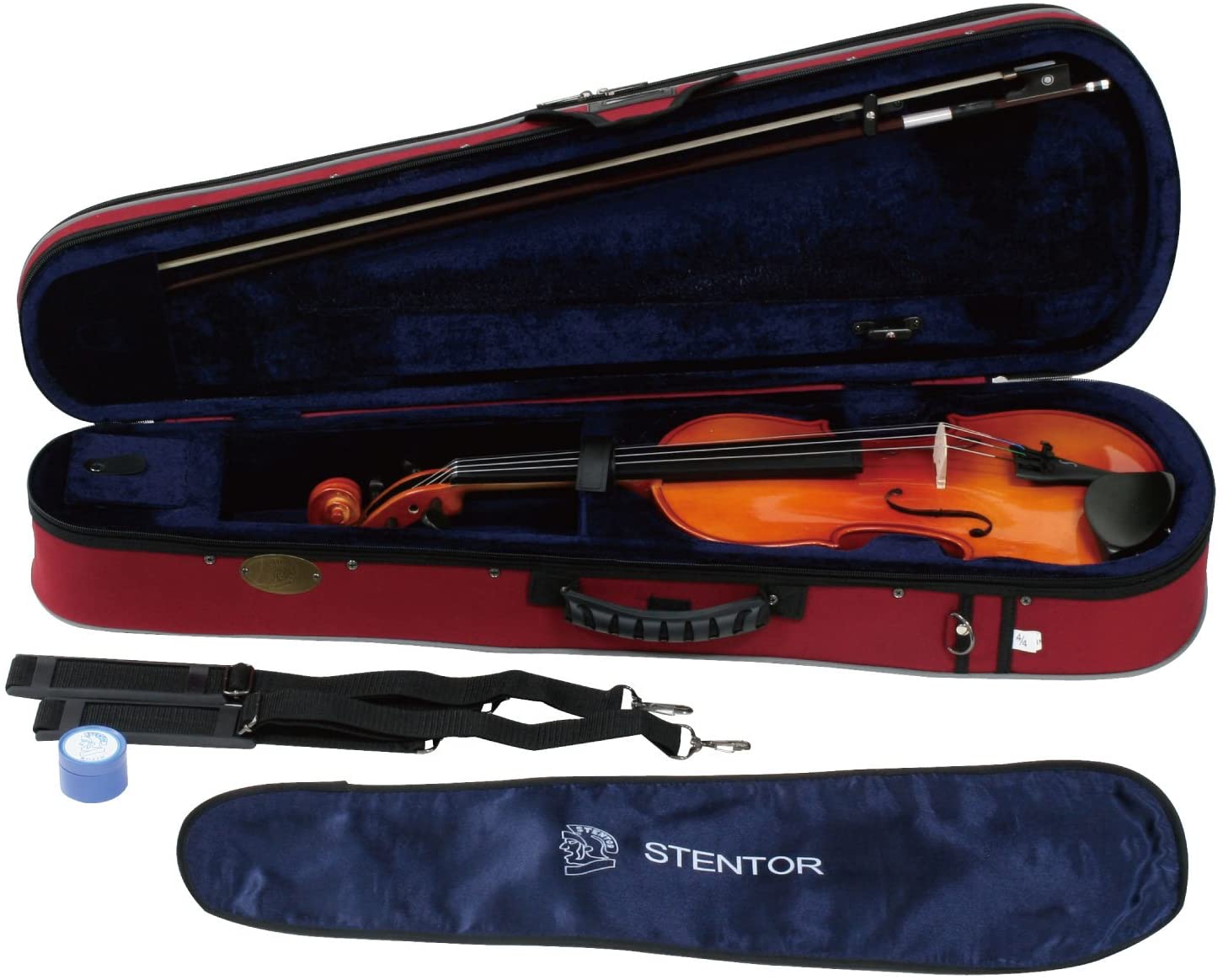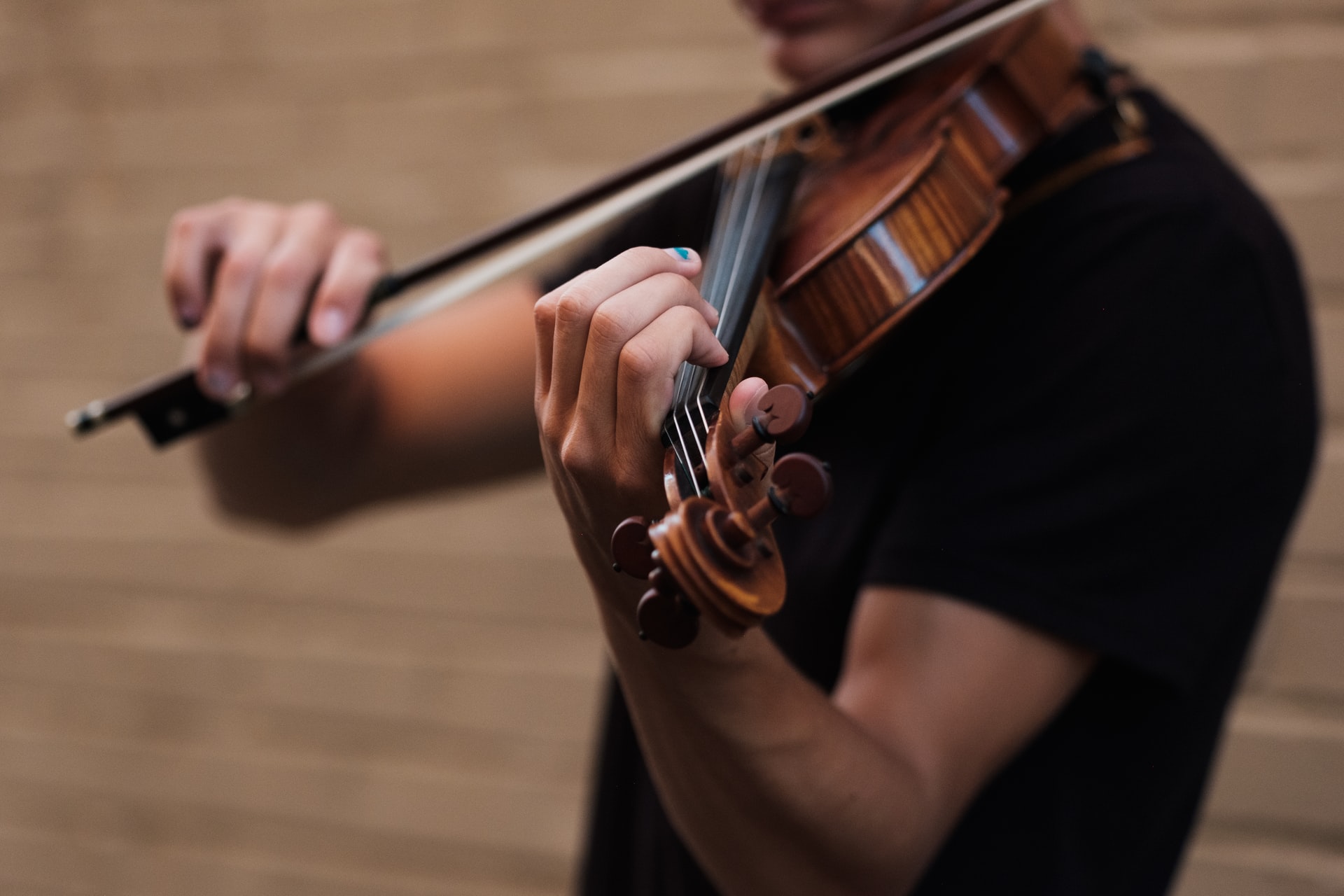- How To Find The Best Jazz Violin - April 26, 2022
- Best Eastman Violins Brand Guide - April 11, 2022
- Best Stentor Violins Brand Guide: Which Stentor Violin To Buy - April 3, 2022
While you become a better violin player, the need to replace your budget student violin becomes more and more apparent. The Cecilio CVN series offers just the violins you might need when this need arises. In this Cecilio CVN 500 review and guide, I detail the characteristics of one of the most affordable, quality intermediate-level violins.
My bottom line up front: The Cecilion CVN 500 is a perfect middle point between an entry violin and an instrument for advanced players. It’s a high-quality build violin made with middle-of-the-line tonewoods. It plays smoothly and has a decent warm and deep tone. The CVN 500 is good enough to stay with until you become an advanced player and need a premium instrument. The affordable price and extra accessories make it ideal for new players who want to spend more than the usual budget student violin.
The CVN 500 is a massive improvement to the CVN 300 and considerably better than the 400. I recommend you buy the violin for its price as it’s worth it when you consider the parts and quality. However, depending on your goals and playing style, other alternatives might suit you better.
Cecilio CVN 500 Specifics
- Hand-carved solid spruce top, hand-carved flamed maple back and sides
- Antique varnish finish and inlaid purfling
- Ebony fingerboard, pegs, and chinrest
- Four detachable nickel plated fine tuners
- Stringed with D’addario Prelude strings
- It comes with a hard case, adjustable shoulder rest, and other extra accessories.
Cecilio CVN 500 Pros
- The tonewoods on the violin are good enough to give it a decent rich, full tone.
- The finish makes the violin look classy.
- It fits well with beginners and intermediate players alike
- It comes in all sizes, making it a good violin for children and adults
- The price is very affordable for the quality
- It’s a violin that will last for all your beginner and intermediate years, with the tone improving over time.
- It comes already set up and ready to play.
Cecilio CVN 500 Cons
- Apart from the hard case, the extra accessories with the violin are of poor quality.
- The bow is not well balanced and not on the same level as the violin.
- The strings are not good enough to bring the tone out of the violin.
- It might have slight imperfections in the finish or assembly.
About the CVN series
Cecilio is a well-known brand among violinists. Their specialty is making rich-sounding quality violins affordable for players of every level; The CVN series perfectly represents this trait.
The series consists of eight violin models, from the most basic CVN 100 to the premium CVN 800. Each violin has its perks, but we can generalize that the student violins range from the CVN 100 to the 300, with overall budget parts and not much tone. Upper beginner and intermediate ones are the CVN 400 and 500: decent tone and good quality.
All the six entry-level violins of the series come with a kit of helpful accessories and replacement parts. Overall, Cecilio has every new violinist or intermediate one covered. However, some of the extra accessories might need replacement as they are cheap.
From the CVN 600 to the 800, the three remaining violins are considerably more expensive and of much more quality. These models are better suited for experienced players who know what they look for in a violin.
The Cecilio CVN 500 Accessories
Once the violin comes to your address, you will find it safe inside a hard case, along with useful extras. Algouht they are many, some of them are not the best.
Included in the package, you will find
- Cecilio chromatic tuner
- 2 Brazilwood bows with unbleached genuine Mongolian horsehair
- Quality rosin cake
- Lesson book
- Adjustable shoulder rest
- Extra bridge
One big con of the CVN500 is that it comes with the same extra elements as the cheaper models in the series. Considering that this violin price is almost three times more than CVN100, having the same bow and strings gets in the way of playing this violin to the fullest.
Rosin cake is helpful, and the extra bridge will be useful sooner or later. Consider changing strings to a better pack and also purchasing a better bow. You can still keep the spare ones if you need them, but I wouldn’t recommend sticking to them for a long time.
The Cecilio CVN 500 Build Quality and Hardware
The Cecilio CVN 500 is a quality build instrument that blends middle-of-the-line tonewoods and hardware with good craftsmanship.
On the CVN500, Toonewods are better than on cheaper models of the series and a notch up to “wet” tonewood. They are not the best, but good enough to slightly improve the violin’s tone in time.
Maple, Ebony, and Spruce are a staple for most violins of this price range and even more expensive ones. These tonewoods have better tonal properties than the violin’s overall sound. However, you should keep in mind that even though two violins are made of the same wood type, the quality of the wood and its treatment can make one much better than the other.
The finish is well done, with occasional minor flaws in some individual models. It looks classy and far from plastic, as many student violins do. However, the violin is still factory-made, so don’t expect it to compare with the look of an expensive violin made of out seasoned tonewoods. For an experienced player, it’s easy to tell the difference.
The fine tuners and tuning pegs work nicely. The violin gets a big plus as the four fine tuners are detachable, and you can choose to keep only the one in the high E string, as in the expensive models. Tuning pegs are not the best, and they will likely be misplaced and need some manual fitting.
Expect the violin to stay well on tune for a beginner and perhaps need daily tuning if you play long hours. You could improve tunning stability by changing in time the tuners on it.
The instrument is built in China but passes through quality checks from Cecilio before getting shipped. There can be slight faults in the built or assembly, such as a slightly angled bridge, out-of-place tuners/fine tuners, rough finish in some parts, etc. However, most of these issues can be fixed with a good setup by you or a luthier.
The Cecilio CVN 500 Tone
The CVN 500 is the violin that stands above all the lower entries in the CVN series due to its deep rich tone. If you are looking for a good-sounding violin at an affordable price, the CVN 500 is where you should start your search.
To make the violin, this affordable Cecilio had to make some compromises. The tone is warm and deep, but it is not that impressive-sounding to stand out compared to an expensive violin.
You can consider the tone of the CVN 500 as having glimpses of tonal characteristics from premium violins. However, for a beginner or intermediate player, the tone is good enough for learning and playing it in public performances.
When you might need an even better-sounding violin, affordable violins will not be able to satisfy you anymore. Considering the level of player to whom it is directed and price, the CVN 500 tone is superior to most.
A smooth playing and good-sounding violin can make a lot of difference in making your learning and playing experience enjoyable. If you are in between other models at a slightly lower price range, consider saving up some more for the CVN 500 deep tone.
What Should I Look for When Buying an Intermediate Violin?
After spending one year or several with your student violin, you will surely notice the difference in quality and tone between a cheap and a premium instrument. However, there is this gap between the two filled by middle-of-the-line models.
When buying an intermediate violin, the first thing to look for is its playability. It should play easier and smoother compared to your student violin. Moving around the neck should feel better and more comfortable.
The hardware should feel better in place and stay in tune while playing perfectly. Usually, intermediate violins still have detachable four fine tuners for later stages of your playing when you might not need all of them.
The tone in an intermediate violin should be balanced and not tiny sounding. Getting a good deep tone at an affordable price is rare, so aim first for it to be full and with no scratch.
At this point in your playing, you might have created some preferences on violins. If you have, then stick to what feels right for you. My suggestion would be to save up for a violin that will make you happy playing it!
How Other Violins Compare
Cecilio CVN500 vs Mendini Mv500
The Mendini series is a subbranch of Cecilio focused on affordable student violins. There are, however, quality models suited for intermediate players like the Mv500.
This violin shares a lot in common with the CVN500, from the finish to the tonewoods and smooth playability. However, I would give the VN500 the upper hand due to its deep tone.
The Mendini is an excellent choice if you are a beginner and want to save some money. However, If you are willing to add some extra budget, the tone of the CVN would make playing more pleasant once you become an advanced player.
Cecilio CVN500 vs Cecilio CVN400
Right below the CVN500 is the slightly cheaper CVN400 that also fits the upper beginner/intermediate violin range.
The CVN400 has a glossy, shiny finish and uses cheaper tonewoods when compared to the 500. Hardware is the same, but Ebony is replaced with cheaper Boxwood. There is a noticeable tone difference, with the 500 sounding richer and fuller.
Overall the CVN500 is a better violin. For a price difference of around 40$, I would recommend the 500 for the deeper tone. If, however, you are on a budget and need just a smooth playing violin with a brighter tone, the 400 will do great.
Ceciilion CVN500 vs Stentor II Student Violin
Stentor is another well-known quality violin builder with a range of affordable instruments. Even though the brand is different, there are many similarities considering the similar price range.
The II student violin is an upper beginner instrument with a good tone. It comes with extra accessories similar to the CVN series. The only area where I think it beats the CVN500 is the bow.
If you are looking for a first violin for a lower price, the Stentor is perfect. If you need more depth to the tone, then consider the CVN500.
Final Thoughts on the Cecilio CVN 500
The CVN500 is a perfect choice for filling the gap between your first student violin and premium instruments. It plays smoothly and has all the boxes checked for an extraordinary first violin or an improvement to any beginner model.
I especially like this violin’s deep tone, rare to find at this price point. It’s a quality built with minor flaws in the hardware assembly on rare occasions. I would suggest replacing the strings and the bow, as they do not match the quality of the violin, and you would struggle to get the tone and smooth playability.
If your goal is to get a decent tone in a violin that plays well at an affordable price, the CVN500 is a perfect choice. If you already own an intermediate violin, you might want to save up more and aim for the CVN600 to feel a lot of difference.
FAQ
Answer: The general guideline is when a student has trained for a least 2-3 years. There is no set rule, and it’s entirely up to you. It depends on your budget and how fast you advance as a player. I suggest you get one when you start feeling the need for one and are ready to invest.
Answer: There is no set rule for when a violin bow should be replaced or rehaired. Professional players rehair violin bows often, 3 or more times per year, and choose expensive ones that are well balanced and fit their style.
A beginner should consider getting a new bow if their own feels not right, is off-balance, and heavy. Getting an opinion from a tutor or comparing it to other bows can help you decide. Also, consider changing a cheap violin bow after some 6 months as they consume faster and might be worth rehairing.
Answer: A common practice is applying rosin to the bow after approx. Six hours of playing. With experience, you will feel when the time right from how the bow responds.
Looking for more interesting readings? Check out:

